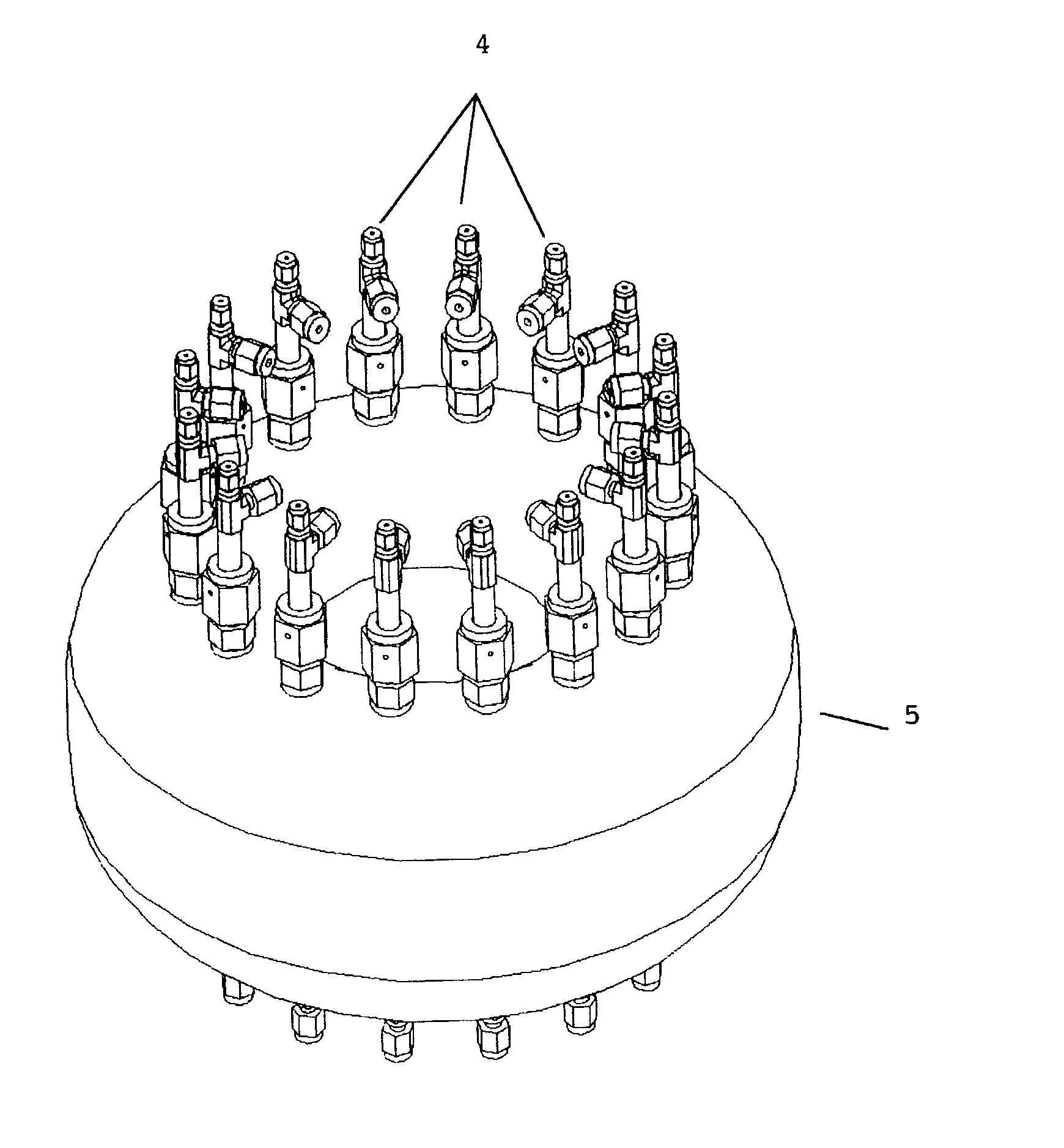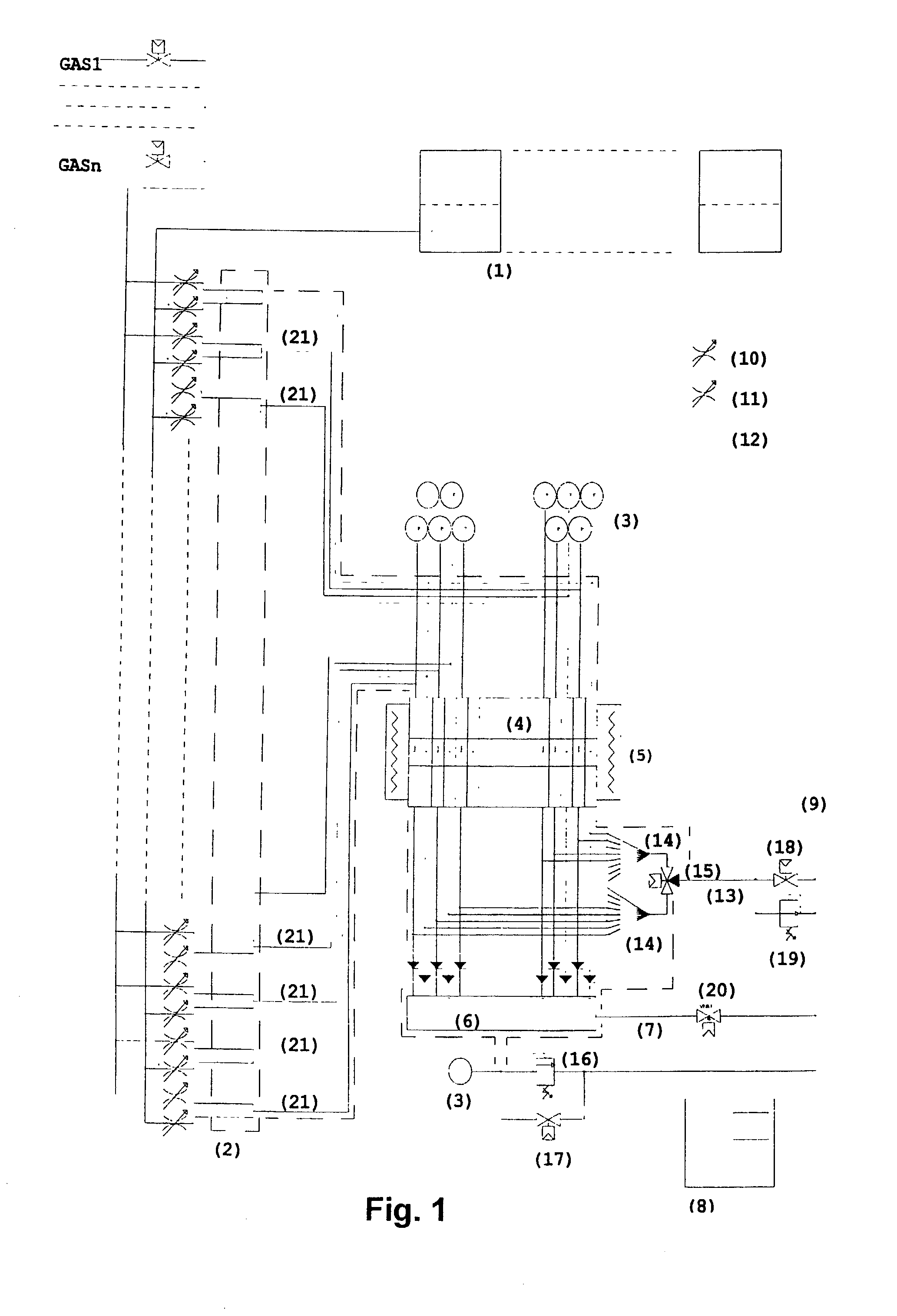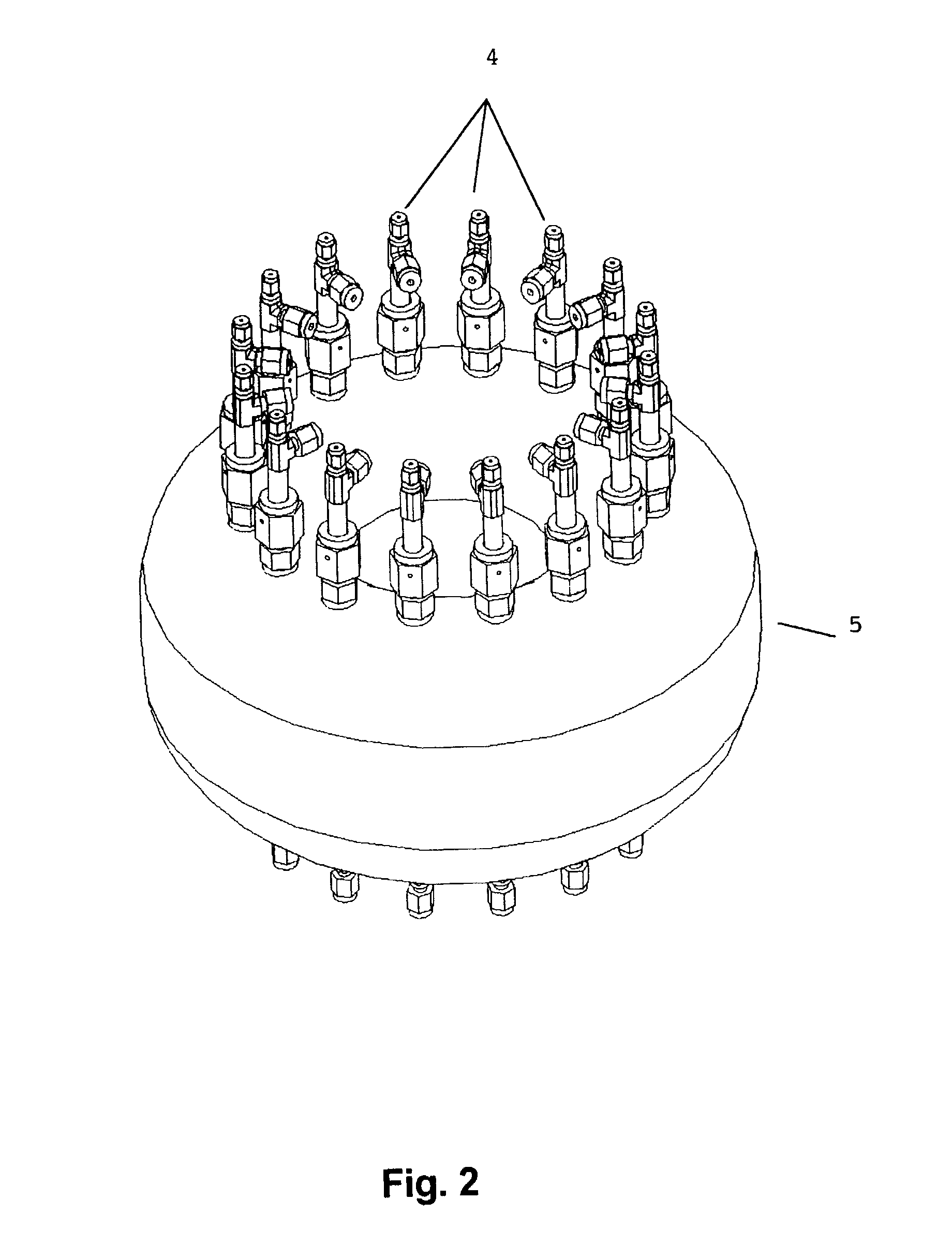Catalytic testing device and method for its use in material testing
a testing device and material technology, applied in the direction of catalyst activation/preparation, flow control, temperatue control, etc., can solve the problems of not being able to achieve any kind of control or measure over the streams circulating through each catalyst, and not being able to achieve any kind of control or measure over the different temperatures, etc., to achieve quick and accurate decision
- Summary
- Abstract
- Description
- Claims
- Application Information
AI Technical Summary
Benefits of technology
Problems solved by technology
Method used
Image
Examples
Embodiment Construction
[0015] The objects and objectives specified above are achieved by means of an automatic device for catalytic testing which includes
[0016] at least one reaction block consisting of an array of reaction chambers capable of housing solid materials inside and with each chamber having a fluid input, and an output connected to an outgoing fluid duct that links up with analysis means (such as for example analysis means selected from among gas chromatography systems, mass spectrometry systems, visible spectrometry systems, ultraviolet spectrometry systems, infrared spectrometry systems and ultra-fast gas chromatography systems consisting of a set of capillary tubes arranged in columns selected from among columns of multiple capillaries in parallel and multicapillary columns, for the separation of different chemical compounds present in the outgoing fluid from each reaction chamber),
[0017] fluid feed means (such as for example a mass stream regulating system based on changes in temperature d...
PUM
| Property | Measurement | Unit |
|---|---|---|
| temperature | aaaaa | aaaaa |
| temperature | aaaaa | aaaaa |
| temperature | aaaaa | aaaaa |
Abstract
Description
Claims
Application Information
 Login to View More
Login to View More - R&D
- Intellectual Property
- Life Sciences
- Materials
- Tech Scout
- Unparalleled Data Quality
- Higher Quality Content
- 60% Fewer Hallucinations
Browse by: Latest US Patents, China's latest patents, Technical Efficacy Thesaurus, Application Domain, Technology Topic, Popular Technical Reports.
© 2025 PatSnap. All rights reserved.Legal|Privacy policy|Modern Slavery Act Transparency Statement|Sitemap|About US| Contact US: help@patsnap.com



